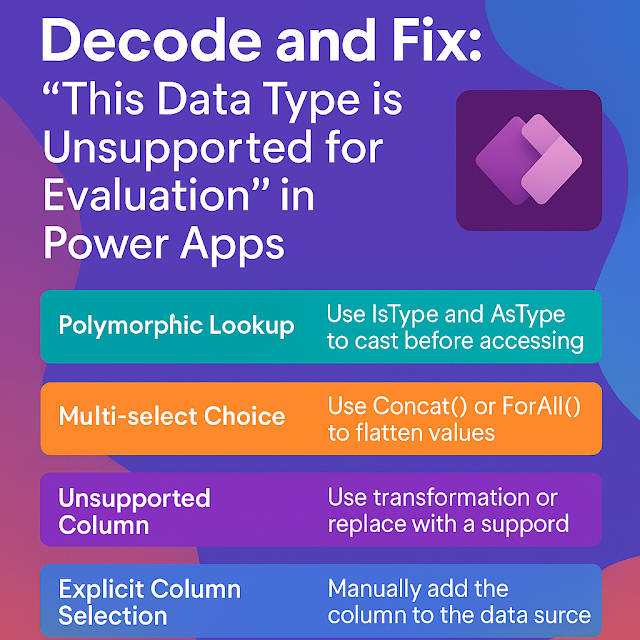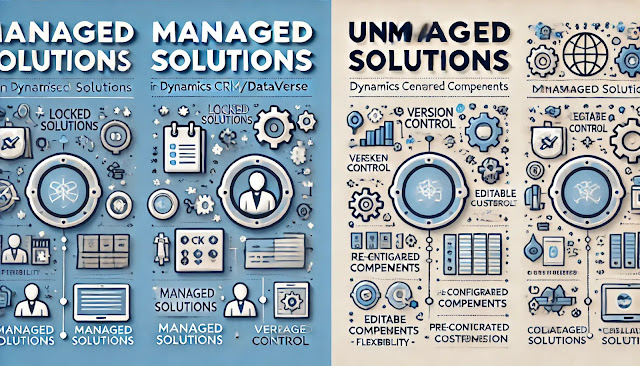Dynamics 365 Field Service : Enable scheduling for a table, including configuring the metadata
When working with Dynamics 365 Field Service, efficient scheduling is at the heart of delivering timely and effective service. Whether you're scheduling work orders, inspections, or custom activities, enabling scheduling for a custom or out-of-the-box table allows you to take full advantage of the Universal Resource Scheduling (URS) engine.
This blog dives deep into how to enable scheduling for a table and how to configure the necessary metadata to make it schedulable using Resource Scheduling in Dynamics 365.
What Does “Enable Scheduling for a Table” Mean?
By default, only certain entities (like Work Order) are schedulable. If you want to use URS to schedule other types of records—such as a custom entity like "Inspection" or "Site Visit"—you need to enable scheduling for that table. This makes the entity recognizable by the Schedule Board, Resource Availability, and Bookable Resource Booking framework.
Prerequisites
Before enabling scheduling, make sure:
- You have System Administrator or equivalent privileges.
- Field Service or Universal Resource Scheduling is installed.
- The target entity is enabled for activities (important for bookings and timelines).
Step-by-Step: Enable Scheduling for a Table
1. Go to the Resource Scheduling App
- Open the Field Service Admin Center or Resource Scheduling App in Dynamics 365.
- Navigate to Scheduling > Enable Scheduling (or use the "Scheduling Setup Metadata" in earlier versions).
2. Select the Table You Want to Enable
- Click + New to create a new Scheduling Metadata record.
- In the Target Entity Logical Name, select the logical name of your table (e.g., `new_inspection`).
3. Configure Metadata Settings
You’ll be presented with several important fields:
Booking Relationship (Required)
- Define the relationship between your entity and the Bookable Resource Booking entity.
- If not already created, you need to manually set a 1\:N relationship from your entity to the Bookable Resource Booking table.
Booking Status Field Logical Name
- Optional, but allows you to reflect the status of the booking back to your entity.
Booking Start and End Fields
- Map the Start Time and End Time of your entity (used for scheduling window).
Resource Requirement Relationship
- Optionally map the entity to a Resource Requirement. This is useful for optimization and schedule board filtering.
What Happens After Enabling Scheduling?
After configuration:
- Your entity will now appear in Schedule Assistant, Schedule Board, and can be used in resource optimization.
- You can create Resource Requirements from this table or generate Bookings directly.
- Related bookings will appear on the form timeline (if timeline is used).
Testing the Setup
1. Go to your custom record (e.g., an Inspection).
2. Use the Book button (if added to the form).
3. The Schedule Assistant will show available resources.
4. Upon booking, a Bookable Resource Booking is created and linked back to your record.
Advanced Configurations (Optional)
- Auto-create Resource Requirement using Power Automate or Plugin when a record is created.
- Custom Booking Logic using plugin (for special scenarios like multi-resource or constrained booking).
- Use Schedule Board Tabs to create a dedicated view for your custom entity.
Best Practices
- Always test in a sandbox environment before enabling scheduling in production.
- Avoid enabling scheduling on highly transactional entities unless required.
- Make sure relationship mappings are correct to avoid broken bookings.
Summary
By enabling scheduling for your custom tables, you unlock the full potential of resource planning, calendar views, and intelligent scheduling, which can dramatically improve field efficiency and customer satisfaction.
If you found this useful, stay tuned for more deep dives into Dynamics 365 Field Service topics like Resource Requirements, Skill-based Scheduling, and Work Order Customizations.












Comments
Post a Comment